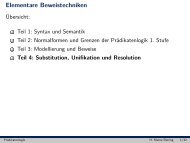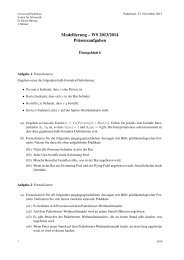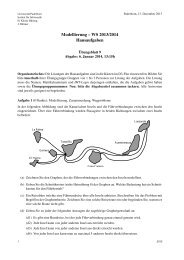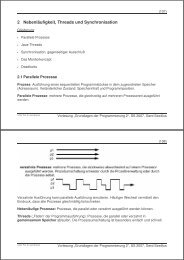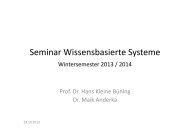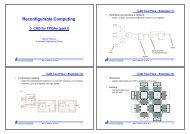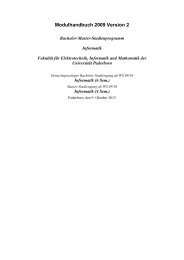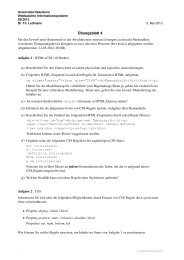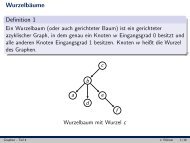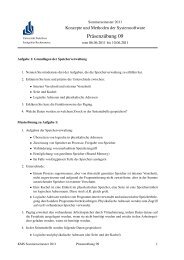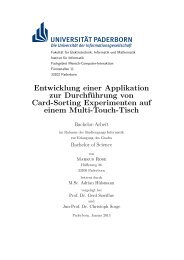User Modeling human-computer interaction
User Modeling human-computer interaction
User Modeling human-computer interaction
You also want an ePaper? Increase the reach of your titles
YUMPU automatically turns print PDFs into web optimized ePapers that Google loves.
3 UM-Shellsystems<br />
”A UM-Shell is a generic domain independent system whose purpose is to<br />
allow the development of user modeling systems.” (p. 24 in [Bla96])<br />
3.1 Overview of UM-Shellsystems<br />
To introduce UM-Shellsystems here is a short overview of some shell systems.<br />
• <strong>User</strong> modeling toolkit (UMT) – Brajnik 1992<br />
The UMT is a highly flexible and generic system to provide the development of<br />
user models.<br />
• General user modeling shell (GUMS) – Finin 1989<br />
Is based on a platform-independent architecture to develop individual, long-term<br />
user models.<br />
• Belief, Goal, Plan Management System (BGP-MS) – Kobsa 1993<br />
(see subsection 3.2).<br />
• PROlog based tool for user modeling (PROTUM) – Eydner 1992<br />
PROTUM is based on the GUMS from Finin and the BGP-MS from Kobsa.<br />
• General user model akquisition component (GUMAC) – Kass 1988<br />
The focus of this shell system is the akquisition of the information about a user.<br />
• Doppelgänger – Orwant 1995<br />
The Doppelgänger shell system was primarly build to provide a personal newspaper<br />
to each individual user. It is a server based system, so that it stores the user model<br />
in a distributed way.<br />
3.2 The UM-Shell BGP-MS<br />
The believe, goal, plan - management system (BGP-MS) is an integrated toolkit for<br />
user modeling. It builds up a schematic user model with stereotypes and stores it in a<br />
hierarchical partition system.<br />
system overview As we can see in figure 1 there are four main components in the shell<br />
system which communicate over the functional interface. The individual user model and<br />
the stereotypes are build upon the representation system which is based on the SB-ONE<br />
knowledge-representation tool. The user model developer can manipulate the knowledge<br />
of the representation system with a graphical interface.<br />
5



